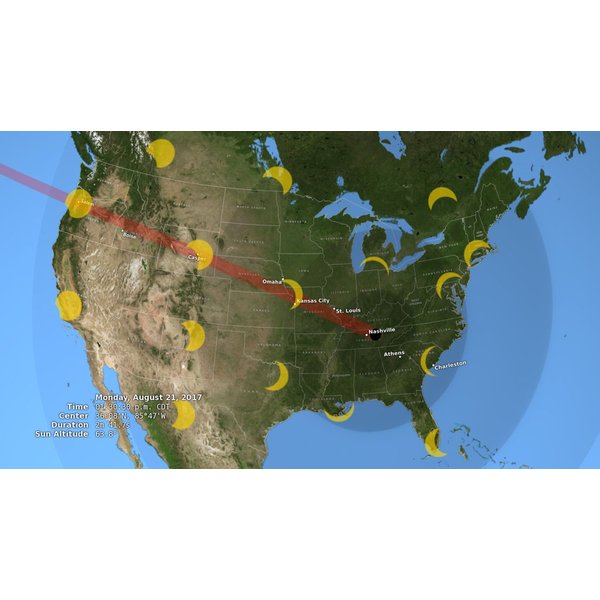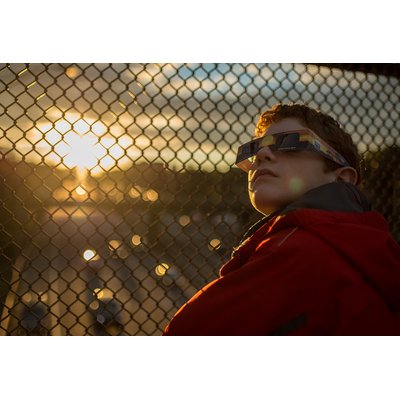
On Aug. 21, 2017, North America will be treated to a rare solar eclipse. The eclipse will travel southeast from the West Coast to the East Coast, making a partial solar eclipse visible in every state in the continental U.S. What makes this eclipse so unique, though, is that 14 states will be able to experience a total solar eclipse, in which the moon completely covers the sun. That means more than 300 million Americans will be able to see the sun’s outer atmosphere, called the corona, during the total solar eclipse, according to NASA. What does the “corona” look like? You’ll find out on the day of the eclipse, but if you notice pearly white rays and streamers radiating around the lunar disk, that’s it! Viewing this total eclipse is a once-in-a-lifetime experience that millions of Americans are lucky to have the opportunity to experience.
But before you step outside to view the solar spectacle, you’ll want to make sure you have proper eyewear for safety. You should also be aware of the following three facts that will make the event feel even more special and rare.

Photo credit: NASA/Goddard Space Flight Center Scientific Visualization Studio
Fact #1: The temperature will drop.
Imagine you’re standing outside and the time instantly changes from afternoon to evening. That’s essentially what a total solar eclipse does.
A total solar eclipse causes a sudden loss of extreme ultraviolet radiation from the sun, which generates the ionized layer of Earth’s atmosphere called the ionosphere, a NASA press release explains.
“The eclipse turns off the ionosphere’s source of high-energy radiation,” said Bob Marshall, a space scientist at University of Colorado Boulder and principal investigator for an upcoming NASA study, in a statement. “Without ionizing radiation, the ionosphere will relax, going from daytime conditions to nighttime conditions and then back again after the eclipse.”
The effect is similar to stepping into the shade on a hot day. When the radiant heat is blocked from the sun, the temperature drops significantly. In this case, a complete loss of sunlight can cause the temperature to drop 10 degrees or more.
Fact #2: The eclipse will only last a couple of minutes.

solar eclipse. Photo credit: NASA/Bill Ingalls
The eclipse will begin near Lincoln City, Ore., at 10:15 a.m. PDT and end near Charleston, S.C., at 2:48 p.m. EDT. In total, the eclipse will take about 1 hour and 40 minutes to cross from coast to coast. So, how much time does that mean you’ll have to view the eclipse for yourself? In general, the total eclipse will last about 2 minutes. At the end of its “path of totality” in Columbia, S.C., the total eclipse’s duration will be the longest at 2 minutes and 30 seconds, according to Space.com.
Fact #3: The last total solar eclipse was nearly 100 years ago.
The last time a total solar eclipse was visible across the United States was in June 1918. On average, a total solar eclipse occurs every 18 months. However, it generally takes about 400 years for the same location to experience another total solar eclipse, according to Space.com. So if you’re lucky enough to be located in the “path of totality,” be sure to step outside and enjoy the spectacle this Monday!
For information about viewing safety and local eclipse activities, visit https://eclipse2017.nasa.gov.
Have Questions About Your Project?
Our team of Radiant Experts is ready to help!
Stay Updated
Get the latest radiant heating news and tips delivered to your inbox.



